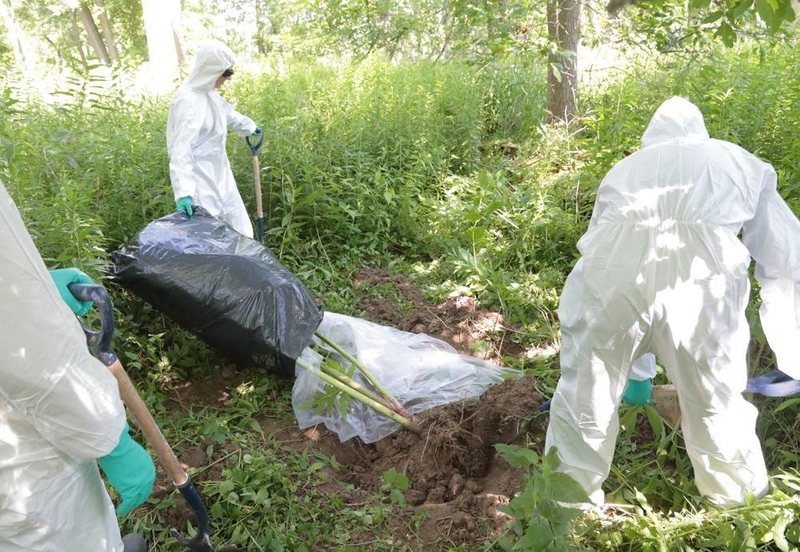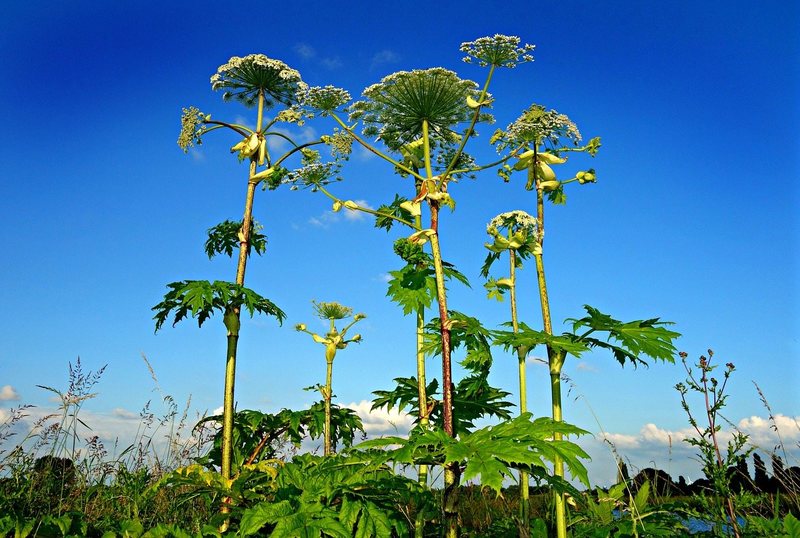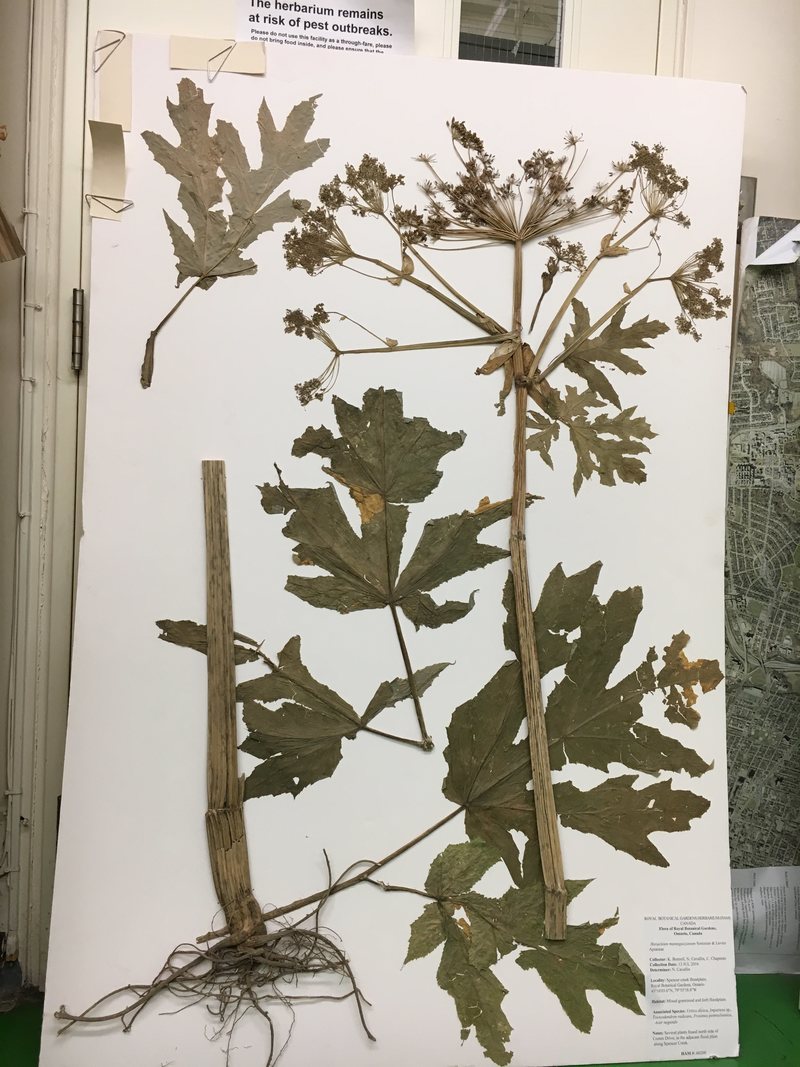
If you happened to be driving past Cootes Paradise Sanctuary in Hamilton, Ontario, on a particular mid-July day in 2016, you might have seen something that left you scratching your head: three figures in head-to-toe hazmat suits and safety goggles, two of them holding shovels and the other toting a human-sized object wrapped in garbage bags, all waiting to cross the four-lane road and get back to their parked truck.
“There were a whole bunch of cars coming by at the time,” recalls Nadia Cavallin, who led the team. “People were slowing down and looking at us with their mouths wide open.”
Despite appearances, Cavallin—the herbarium curator at the Royal Botanical Gardens, of which Cootes Paradise Sanctuary is a part—wasn’t the dangerous organism in this scenario. That honor goes to the thing in the garbage bags: a six-foot giant hogweed, or Heracleum mantegazzianum.

An invasive plant that can grow up to 14 feet tall, the sap of the giant hogweed can cause second-degree burns (thus the hazmat suits) and, potentially, blindness (thus the safety glasses). Plus, it’s sneaky, resembling a number of less harmful plants. By wrestling that specimen out of the ground and back to the lab, Cavallin and her colleagues were risking their skins to educate the public.
On the outside, the giant hogweed doesn’t seem too scary. Each plant’s stem is thick and stately, green with purple accents, and covered in short bristly hairs. The leaves, which can grow up to three feet wide, have intricate, spiky lobes, and look almost like snowflakes. The plant is topped with an umbrella-shaped cluster (or umbel) of small white flowers.
The overall effect is that of an enormous sprig of Queen Anne’s lace, plucked from the bouquet of a giant. Its beauty, in fact, is what brought it to North America in the first place. “It is originally from the Caucasus Mountains,” says Cavallin, and was brought overseas in the early 20th century “as an ornamental plant.
”
It’s the inside you have to watch out for. Unlike other dangerous plants, which may get you with their poisonous berries, leaves, or fruits, the giant hogweed’s power is in its sap, which is clear and watery, and contains chemicals called furanocoumarins. These deter animals from eating the plant, and are also phototoxic, which means they make human skin very sensitive to ultraviolet light.
It’s a bit of a sneak attack: the sap often causes blistering burns for days after the initial exposure, and some amount of sun sensitivity can persist for years….
The post How Professionals Wrestle With One of the World’s Scariest Plants appeared first on FeedBox.